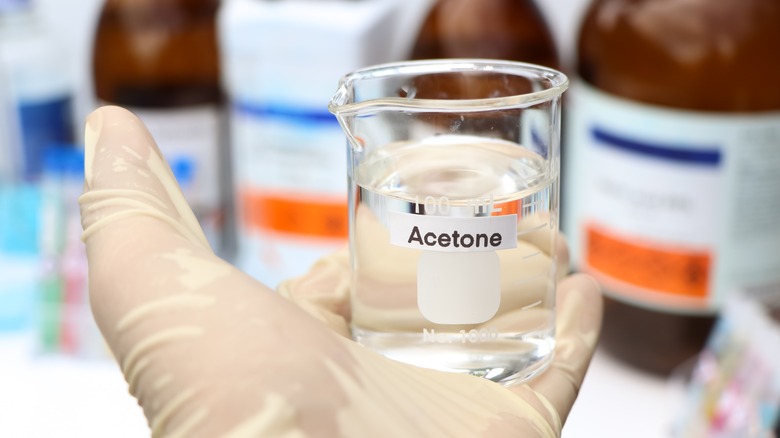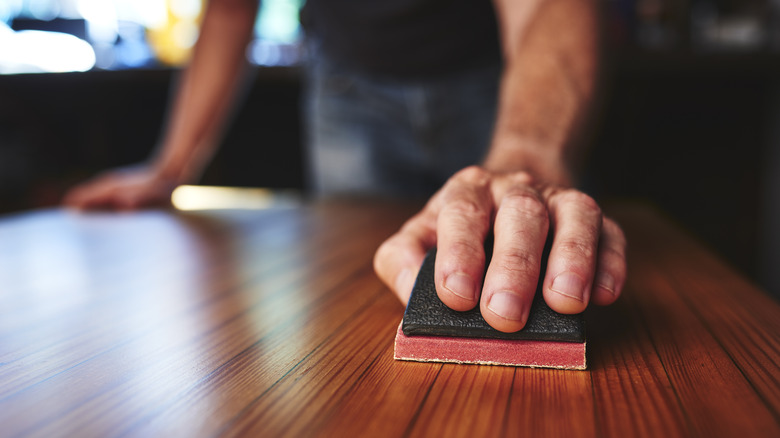How To Repair Any Nail Polish Remover Damage On Wood
We've all been there; you're taking off your toenail polish from the couch while distracted by the TV when you realize your cotton ball is packed with paint. So, you unsuspectingly place it on your wooden coffee table and reach for another. But, when you pick the cotton ball back up to discard it, a discolored circular mark is left beneath it. What happened?
Nail polish remover is a solvent that is relatively safe to use on the skin. Employed correctly, the solution makes it easy to take off a variety of manicure types without much damage being done to your natural nail plate. However, it is not as forgiving on wood surfaces, especially those finished with stain or paint. Even a tiny amount of nail polish remover introduced to a wood surface can create major damage. Thankfully, it isn't impossible to fix the stain, but it will take some effort. With the help of a few different household items, you can soak up the solvent, minimize the effects, and hide the damage caused by nail polish remover.
How nail polish remover affects wood surfaces
Many of the most popular nail polish removers contain a chemical called acetone, which is excellent at dissolving various materials. In addition to wood and wood finishings, acetone can damage plastic, metal, or certain thin lacquers. That said, not all nail polish removers are made with acetone. There are a variety of non-acetone versions of the product that use ethyl acetate or methyl ethyl ketone instead. Still, both solvents can damage wood surfaces, though maybe not as quickly.
As soon as you spill nail polish remover on a finished wood surface, it dissolves the coating. It strips the finish, and if left to eat the coating down to the wood, it could begin to warp or "melt" that too. Not only is this damage quite noticeable in most instances, but depending on the finish, the wood, and the type of remover you're using, it's likely to become discolored or bleached. To avoid breaking out the orbital sander and refinishing the entire piece of furniture, or worse, throwing it out entirely, you'll need to act quickly.
How to repair damage caused by nail polish remover
Nail polish remover damage on wood is unsightly. Yet, as long as you take the proper steps as soon as possible, it shouldn't require too much work to manage. You'll need a soft old rag, Vaseline, baking soda, and a scrubbing sponge. Like a red wine stain on the carpet, always dab the liquid. Do not rub it around. Rubbing the acetone around your wooden furniture will only create a larger problem.
First, if it hasn't evaporated already, you'll want to use a dry old rag or paper towel to soak up the remover. Avoid using water, as the two liquids can combine and make the problem worse. Next, mix one-part Vaseline with one-part baking soda in a small bowl. Dip a dry scrubbing sponge into your mixture and gently work it into the affected area. Then, you can wipe the Vaseline and baking soda off and evaluate the extent of the damage. The finish may have faded or been completely eaten away, or the nail polish remover may have even discolored the wood stain. Though it depends on the severity of the deterioration, typically, the easiest way to repair it is to moderately sand the corrupted area with a small piece of sandpaper and apply a thin coat of the same varnish, stain, or paint. Afterward, the wood surface should show minor, if any, damage.


